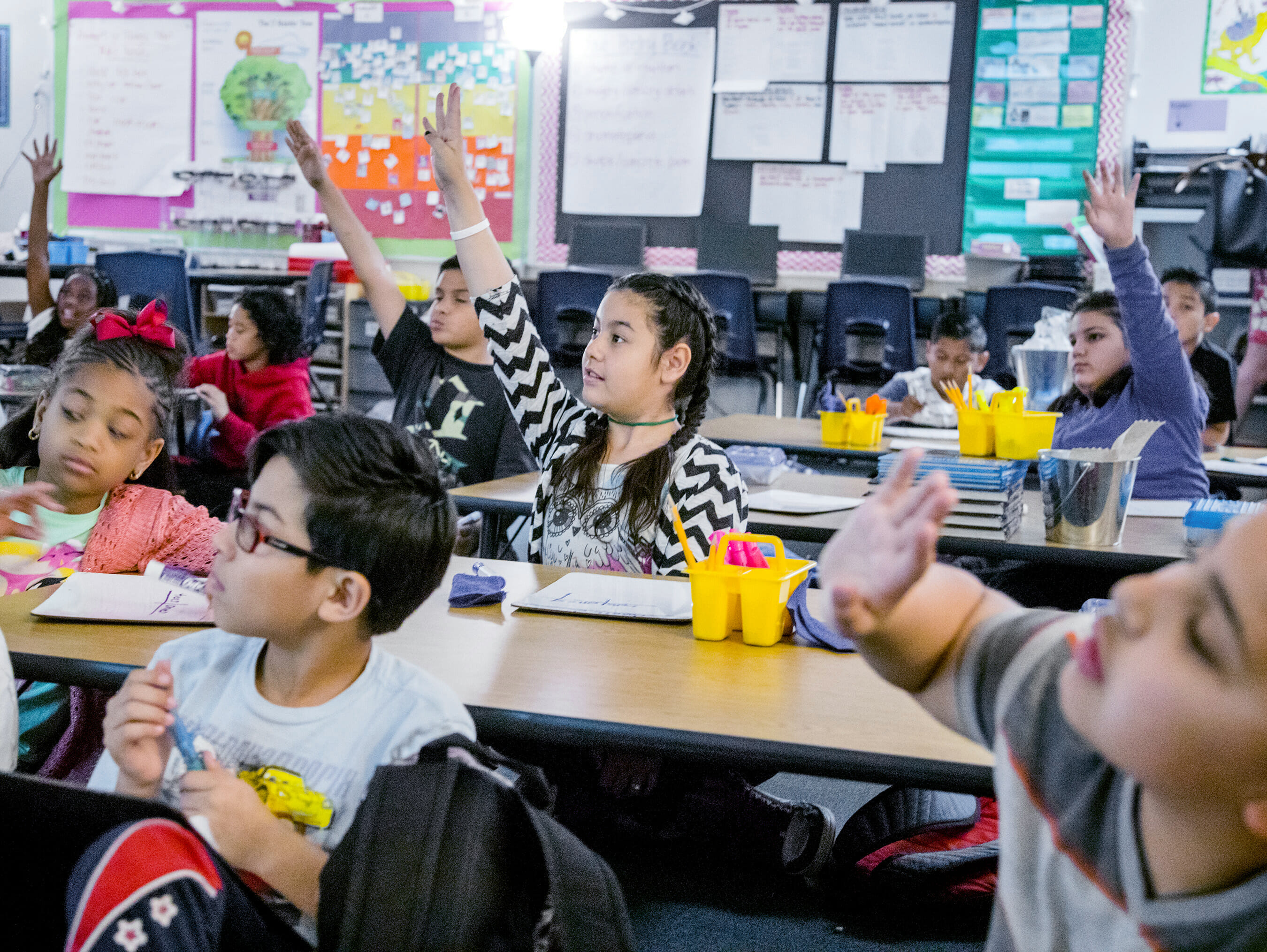The Indy Explains: What's happening to categorical funding under the new K-12 financing plan?

Long before the pandemic thrust online video platform Zoom into the national vernacular, the term held a very different meaning in Nevada.
In 2013, former Gov. Brian Sandoval signed a bipartisan bill that ushered $50 million toward students learning English as a second language. The schools that received money, all of which have large numbers of non-English-speaking students, came to be known as “Zoom schools.”
Two years later, so-called “Victory schools” debuted and money began flowing to schools serving a large population of students from low-income households.
These two programs are perhaps the most well-known examples of state categorical funding, which lived outside of Nevada’s old K-12 funding formula. Some operated as competitive grants, meaning school districts needed to apply and be selected to receive the money. Others were distributed via formulas. The arrangement provided school districts little flexibility, given the prescriptive nature of the grants.
But a new funding formula has changed the money game. The Pupil-Centered Funding Plan — which was created during the 2019 Legislature and is being implemented for the upcoming biennium — essentially does away with categorical grants by consolidating them and sending the money to school districts through different methods.
Heidi Haartz, deputy superintendent for business and support services within the Nevada Department of Education, explained it this way:
“If a school district received the categorical grant … they got to hire a specific number of lead literacy specialists. They got to hire a specific number of social workers, this specific number of school resource officers. There were limits on what they could do based on the categorical grant,” she said. “Now, school districts and charter schools receive those funds and they can decide — do I need more literacy specialists than one per elementary school? Do I need more social workers and maybe fewer school resource officers? Or is that different this year than it might be next year? It gives them incredible flexibility to meet the needs of their students, and in real time.”
So what exactly is happening to all the categorical grants? Here’s a breakdown:
A large chunk of categorical funds are being consolidated in the Pupil-Centered Funding Plan and re-allocated through the statewide base and adjusted base per-pupil funding amounts.
Twenty-six state categorical grants are being “melted” into the State Education Fund, so they will no longer be standalone initiatives. Class Size Reduction, New Teacher Incentives, Nevada Ready 21 Technology, College and Career Ready Diploma Incentives, Read by Grade 3, School Social Workers and School Resource Officers are among the grant programs being consolidated.
Some of those programs weathered pandemic-related budget cuts, although, in the final days of the legislative session, state lawmakers added roughly $500 million to the education budget to restore some of the funding.
The statewide base per-pupil funding for the 2021-2022 fiscal year is $6,980. The adjusted per-pupil funding amounts — which take into account variation in local costs — range from $7,222 in Washoe County to $33,746 in Eureka County for that same fiscal year.
Three types of categorical state grants will be consolidated in the Pupil-Centered Funding Plan and redistributed as weights.
Those include the Zoom, Victory and New Nevada Funding Plan (SB178) programs. All three will go toward providing extra money — or “weights” — for students learning English as a second language and those who come from low-income households. The weight for at-risk students will go to children who are eligible for free or reduced-price lunch. The SB178 funding, which previously served students performing in the lowest quartile academically, will be split between the two weights.
The weights, which are a multiplier of the statewide base per-pupil funding, have been set at 0.24 for English language learners and 0.03 for at-risk students. Given the statewide base per-pupil amount, that works out to roughly an extra $1,648 for English language learners and $209 for at-risk students.
Some have criticized the transition, saying the weights are too low and, thus, is watering down the successful Zoom and Victory programs, which provided support to students through tutoring, extended school periods, reading centers and more. But education officials say the long-awaited transition to weights ultimately will lead to more students receiving services — not just those who happen to attend a school that received Zoom or Victory funding.
The goal is to add to the weights over time, gradually increasing the amount of money sent to students. The Legislature recently passed a new mining tax bill that sends an additional $500 million toward education; meanwhile, the Commission on School Funding, which is the advisory body shepherding the new funding formula into existence, has recommended the state consider changes to property or sales taxes to further expand K-12 funding.
For now, the amount being sent to support English language learners and at-risk students is on par with the existing allotment.
In fiscal year 2020, the state allocated $144 million combined for Zoom, Victory and SB178 categorical funding programs. For the upcoming fiscal year, under the new funding plan, the state plans to allocate $145.3 million toward the English language learner and at-risk weights. About $85 million would go toward students learning English as a second language, while $60.3 million would be sent to at-risk students.
While most of the categorical grants are moving to the Pupil-Centered Funding Plan, some will remain outside of it.
Those include federal grants requiring a maintenance of efforts, such as special education, as well as funding for pre-kindergarten, career and technical education, adult education and Teach Nevada Scholarships.
Operational funding for the Nevada Department of Education also lies outside the Pupil-Centered Funding Plan. For instance, the department receives funding for the Office of the Superintendent, educator licensure, professional development programs and assessments, among other agency needs.
